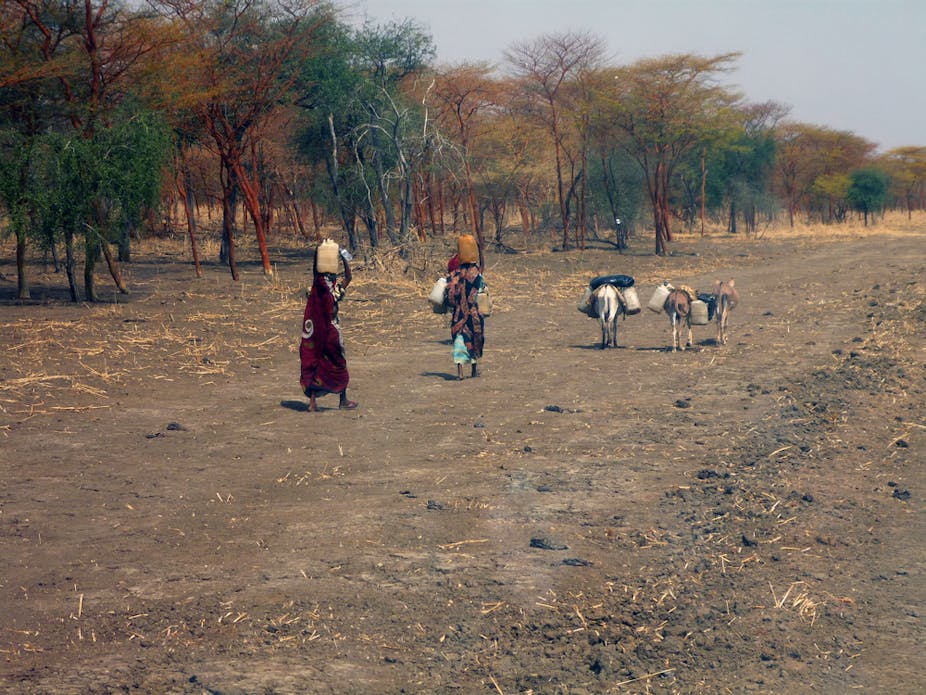
East Africa is one of the most vulnerable regions in the world to extreme weather and climate events and to variability and change in climate. It is also one of the hardest regions to find good climate data on. Now, thanks to recently published research from UNU-FLORES, decision-makers in hot spots in East Africa will be able to more accurately assess the impact of climate change and plan adaptation measures.
Analysing several accessible data sources in East Africa in his PhD research, Solomon H Gebrechorkos identified the most suitable sources of high-quality climate and hydrological data for data sparse and remote areas in East Africa. The data from these sources can be used to identify hot spots – communities that are vulnerable to significant change in climate and climate extremes and require immediate attention – and plan adaptation and mitigation measures at much finer spatial scale than previously possible.
According to the recently published report of the UN’s Intergovernmental Panel on Climate Change, global warming is expected to reach 1.5°C in as early as 12 years, resulting in a continued increase in extreme weather events and climate variability. Such events and changes cause a wide range of impacts on the local society and environment and pose serious challenges to environmental and resources management. In the past, the necessary long-term data to identify, understand, and react to these developments has not been readily available in East Arica. On the one hand, there is a problem of accessibility: the traditional sources follow data sharing policies that make it difficult for modellers to gain access to the data. On the other hand, if made available, the data are often of poor quality. Gebrechorkos´ findings are central to addressing this problem. Instead of investing considerable efforts in collecting and evaluating the quality of data, now experts and modellers developing adaptation measures for this region can get straight to the work.
These results are the culmination of his research for the Joint PhD Programme of the United Nations University Institute for Integrated Management of Material Fluxes and of Resources (UNU-FLORES) and the Technische Universität Dresden, Faculty of Environmental Sciences. Under the supervision of Dr Stephan Hülsmann of UNU-FLORES and Prof. Christian Bernhofer from TU Dresden, Gebrechorkos used several approaches to evaluate multiple climate data sources from national meteorological agencies (e.g., Ethiopia) and international databases and to assess the accuracy of multiple climate data products on daily, 10-day, and monthly time scales. The research, published in the journal of Hydrology and Earth System Sciences, revealed that the Climate Hazards Group InfraRed Precipitation with Station data (rainfall) and Observational-Reanalysis Hybrid (Tmax and Tmin) are the most suitable data sources in the region, when data from meteorological stations is not available.
“The ability of communities in East Africa to prepare, mitigate, and adapt to climate change depends heavily on their ability to predict and understand climate and weather developments. In the past, this was particularly challenging, because the data being put into models was of poor quality. If you put bad information in, bad information comes out,” Gebrechorkos explains. “Now, thanks to this study, we can easily find the best available climate data source, and ensure quality data is being used.”
How useful this high-quality data can be was demonstrated in the study Gebrechorkos and colleagues published in the International Journal of Climatology. Analysing trends in extreme values in temperature and precipitation in East Africa, they were able to develop high-resolution maps that accurately detected changes at local scale – something not yet possible in the region. These maps successfully identified hot spots and provided information that enable for much more targeted adaptation and mitigation measures than previously possible.
Now, when countries discuss how to increase their efforts to combat climate change at the United Nations Climate Change Conference in Katowice, Poland in December, appropriate strategies can also be identified for East Africa. Using the identified sources and the resulting high-resolution maps, decision-makers in agriculture, energy, water, and many more sectors will be able to pinpoint hot spots and develop adaptation measures, improving the water, food, and energy security of millions of people living in East Africa.

